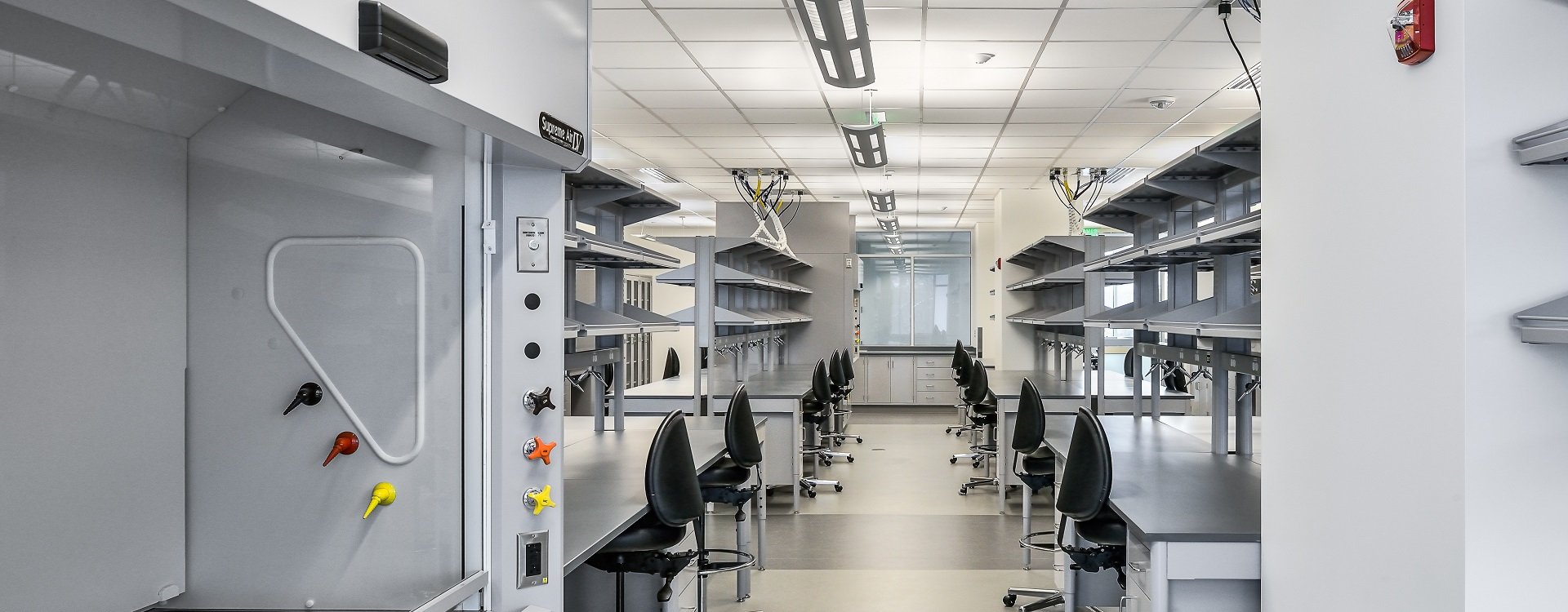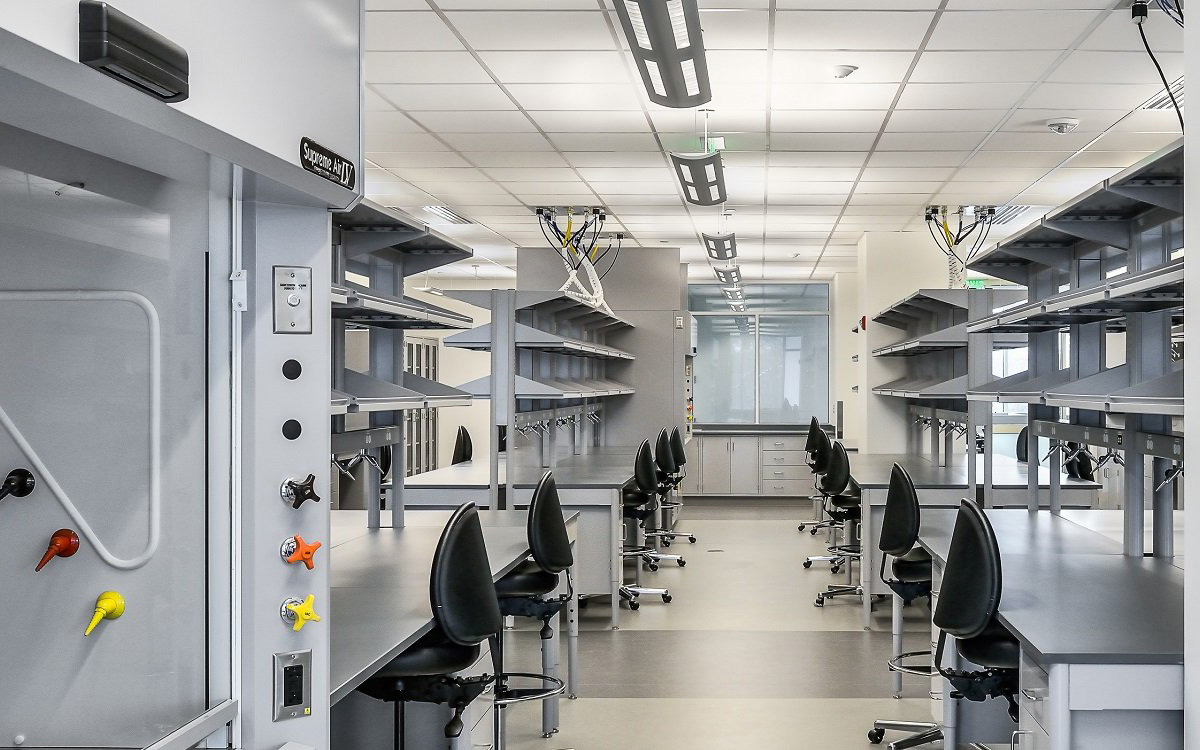Laboratory Hazards and Risks
Date: 2022-01-19 Source: RUANQI Classification: Resources
We know that, to say the least, operating research laboratories is a challenge. In all the hustle and bustle of loading autosamplers, pipetting, pouring and mixing research experiments, the health and safety of workers may be ignored, inadvertently pushed aside or forgotten - sometimes with terrible consequences.
Understanding the required occupational safety and Health Administration (OSHA) programs and identifying hazards will help you identify and minimize many common safety and health hazards associated with operating research laboratories. This safety officer column will help you navigate the health and safety maze. We outline the most common hazards encountered in typical research laboratories. Our hope is that one or more topics may inspire you and inspire you to dig deeper to ensure a safe working environment.
OSHA tells employers that we must provide a "workplace without recognized hazards". There are many specific OSHA standards that may be applicable to research laboratories. The most noteworthy is 29cfr1910 1450, "occupational exposure to hazardous chemicals in laboratories", also known as OSHA laboratory standard. Other standards include hazard communication, respiratory protection, and electrical and fire safety. In addition, section 5 (a) (1) of the general liability clause covers all other recognized hazards that may not have specific standards, such as ergonomics and exposure to narcotic gases or experimental drugs.
Different types of hazards
An important first step in protecting workers' health and safety is to recognize the hazards in the workplace. Most of the hazards encountered fall into three broad categories: chemical, biological and physical. Cleaners and disinfectants, drugs, anesthetic gases, solvents, paints and compressed gases are examples of chemical hazards. Chemical hazards may occur during use and improper storage.
Biological hazards include possible exposure to allergens, infectious zoonosis (animal diseases that can be transmitted to humans) and experimental viruses such as viral vectors. Allergens ubiquitous in animal research facilities are one of the most important health hazards, but they are often ignored.
The last category includes physical hazards associated with research facilities. The most obvious are the ergonomic hazards of slipping and falling while working in wet places and lifting, pushing, pulling and repeating tasks. Other physical hazards that are usually not noticed are essentially electrical, mechanical, acoustic or thermal. Ignoring these may have serious consequences.
Chemical hazard
The use of chemicals in research laboratories is inevitable and may cause injury or injury if abused or handled improperly. OSHA has developed two important standards to help mitigate these potential problems.
The first is the hazard communication standard (29cfr1910.1200), which involves the requirements for employers to provide information and training to employees who use chemicals outside the laboratory This applies to things in the laboratory, such as pump oil, chrome or liquid nitrogen for Dewar bottles. Although these chemicals exist in the laboratory, their use does not meet the standards for laboratory use.
Second, we have already mentioned. 29cfr1910, known as "OSHA laboratory standard" 1450 requires laboratories to identify hazards, determine employee exposure, and develop chemical hygiene plans (CHPS), including standard operating procedures. "Laboratory standards" are applicable to the laboratory use of chemicals, and standard operating procedures (SOPs) are mandatory to address special hazards and preventive measures required for safe use. This is closely related to experimental design and planning. Both standards require material safety data sheets and employee training.
Related article: chemical hazards of laboratory safety: use or discard it - old chemical bottles
Biological hazard
Biological hazards include microorganisms, recombinant organisms and viral vectors. They also include biological agents introduced into experimental animals. Health and safety issues such as containment, replication capacity and potential biological effects are important. When dealing with biological hazards, please ensure that the procedures are carried out safely. Most of the work on recombinant DNA, acute toxins and selected drugs is now regulated by federal agencies such as the U.S. Department of agriculture, the Department of Homeland Security and the Department of health and human services (including the National Institutes of Health). If your factory is conducting research in these areas, you should set up an institutional biosafety committee to ensure that everything goes smoothly.
In terms of frequency, the most common biological hazards are simple allergens related to the use and care of experimental animals. The health survey of experimental animals shows that up to 56% of people are affected by animal related allergies. In the survey of 5641 workers from 137 animal facilities, 23% had allergic symptoms related to experimental animals. These figures do not include former workers who are ill and unable to continue working.
Physical hazard
The research facility itself has significant physical hazards. This includes electrical safety hazards, ergonomic hazards associated with manual material handling and equipment use, handling of sharp objects and basic housekeeping issues.
Many operations in the laboratory may cause laboratory staff to adopt continuous or repeated awkward postures. For example, elute the chromatographic column in the fume hood, work for a long time in the biosafety cabinet, or observe the slide on the microscope for a long time. Using acceptable content for a long time or very frequently, for a short time or occasionally, may become a problem. Pain is a good indicator of a mistake. Work in a neutral and balanced posture. Magnetic assist or programmable pipettes can reduce the frequency of hand force required to prevent worker injury.
Sharp object containers are ubiquitous in research laboratories, and following some safety rules can help prevent accident reports from getting into trouble. Use only stab and leak proof containers with clear labels. Train employees never to remove labels or try to transfer substances. Ensure that these containers are used only for "sharp objects" and that they are replaced when three quarters are full to prevent overfilling.
Many injuries result from poor housekeeping. Slips, trips and falls are common but easy to avoid. Start with a safe and orderly storage area. The storage of materials shall not cause harm. Bags, containers, bundles, etc. stored in layers shall be stacked, closed, interlocked and limited in height to stabilize them and prevent sliding or collapse. Keep the storage area free from accumulation of materials that may cause tripping, fire, explosion or hiding of pests.
Relevant article: watch your feet! Pay attention to the surrounding environment to avoid physical harm.
Electrical hazard
Electrical hazards can be life-threatening and are often found. First, equip all power outlets in wet places and ground fault circuit breaker or GFCI to prevent accidental electric shock. When a small amount of current begins to flow to ground, GFCI is designed to "trip" and disconnect the circuit. Wet locations usually include outlets located within six feet of sinks, taps or other water sources, and outlets located outdoors or in areas that are often flushed. Specific GFCI sockets can be used alone or GFCI can be installed in the electrical panel to protect the whole circuit.
Another very common electrical hazard is the incorrect use of flexible extension cords. Do not use them as a substitute for permanent wiring. The wire insulation shall be in good condition and continue to be inserted into the plug end. Do not use tape to repair cracks, breaks, cuts or tears. Discard or shorten the extension cord by installing a new plug end. Be careful not to put the extension wire through the door or window to avoid being squeezed or cut. And always pay attention to potential tripping hazards when using them. Only use grounding equipment and tools, and do not pull the grounding pin from the plug end. Also, do not use extenders in a series - just get the correct length of wire for work.
Hanging pendants and power sockets are widely used in research laboratory facilities to help remove wires from the floor and avoid. Check the electrical pendant for proper strain relief and the type of box used. The box should be completely closed without any holes. If it contains holes or holes for installation, it is not suitable for hanging pendants.
As a final check of possible electrical hazards, please check your lighting. Protect all lights within 7 feet of the ground from accidental damage. Slide the plastic protective tube over the plastic bulb before installing or installing the screen on the fixture.
Conclusion
Research laboratories face many challenges. In the daily noise of research and experiment, the health and safety of workers are easy to be ignored. However, with proper guidance, keen eyes, and careful observation of the surrounding environment, we can find and correct many common mistakes and prevent diseases or injuries. The Internet provides a lot of valuable information that can be easily studied. Starting from the OSHA website (www.osha. Gov), you are likely to find what you need. Be diligent and remember: "safety first!"




